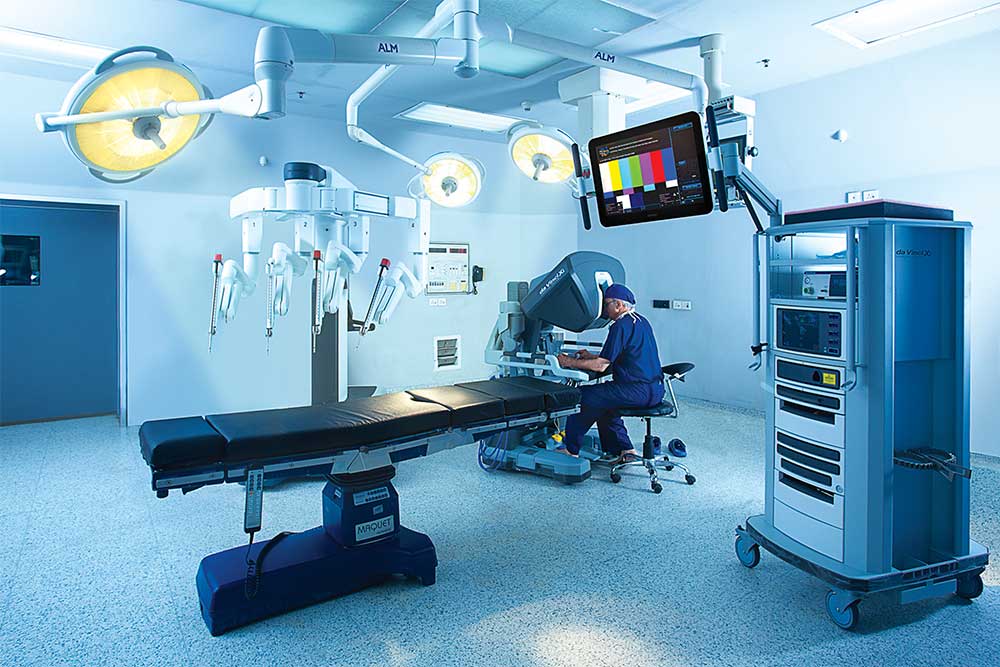
The global robotic catheterization systems market is poised for substantial growth, projected to reach USD 112.5 million by the end of 2029, reflecting a robust Compound Annual Growth Rate (CAGR) of 14.8%. This forecast comes from the latest analysis by Future Market Insights, which also predicts sales revenue to reach USD 42.9 million in 2022, marking a significant milestone in the sector’s steady upward trajectory.
Percutaneous coronary intervention (PCI) applications are expected to dominate the global robotic catheterization systems market, constituting approximately 73.9% of market share in 2021. This surge underscores the increasing adoption of advanced robotic technologies in cardiovascular interventions, offering precision, efficiency, and enhanced patient outcomes.
Get a Sample Copy of the Report: https://www.futuremarketinsights.com/reports/sample/rep-gb-9667
“The exponential growth of the robotic catheterization systems market reflects the escalating demand for minimally invasive procedures and cutting-edge medical technologies,” stated a spokesperson for Future Market Insights. “As healthcare providers prioritize enhanced patient care and procedural accuracy, robotic-assisted catheterization systems emerge as indispensable tools in cath lab settings worldwide.”
Robotic catheterization systems offer numerous advantages, including enhanced maneuverability, real-time imaging capabilities, and reduced radiation exposure for both patients and medical personnel. These systems empower clinicians to perform intricate procedures with unprecedented precision, revolutionizing the landscape of interventional cardiology.
With technological advancements driving innovation in cath lab procedures, stakeholders across the healthcare ecosystem are keenly investing in research and development initiatives to further enhance robotic catheterization systems’ capabilities. This relentless pursuit of excellence is poised to reshape cardiovascular care, ensuring safer, more efficient interventions for patients worldwide.
As the global robotic catheterization systems market continues to expand, industry players are poised to leverage emerging opportunities and address evolving healthcare needs. By fostering collaboration, innovation, and technological advancements, stakeholders are primed to unlock new frontiers in interventional cardiology, revolutionizing patient care and clinical outcomes.
Key Takeaways – Robotic Catheterization Systems Market Study:
- Popularity of robotic catheterization systems, increasing system awareness, improving reimbursement scenarios for percutaneous coronary intervention (PCI), larger patient pool for coronary artery diseases are key factors influencing the robotic catheterization systems market in developed countries.
- High upfront cost is posing a negative impact on end users’ decision to purchase robotic catheterized systems. To rework this problem, Hansen Medical is offering sensei system at a competitive pricing depicting lower accessory cost and lower total cost per procedure.
- Robotic catheterization systems installed in Chesapeake Regional Healthcare marks as the first fully integrated catheterization laboratory installed in its all intervention operating room.
- In terms of product type, electromechanical robotic catheterization systems with comparatively higher technical advantage over magnetic-guided robotic catheterization systems is expected to generate significant revenue.
- In terms of application, increasing adoption of robotic catheterization for percutaneous coronary intervention as compared to cardiac electrophysiology procedure marks higher revenue potential.
Customize Your Report for Maximum Impact: https://www.futuremarketinsights.com/customization-available/rep-gb-9667
Competitive Landscape:
Manufacturers employ various strategic approaches like collaborations, acquisitions, expansions, product launches, agreements, and research sponsorship to bolster product sales across diverse regions.
For instance, in October 2019, Siemens finalized the acquisition of Corindus, a Cath Lab Robotics Vendor. In August 2021, Stereotaxis and Shanghai Microport EP Medtech Co., Ltd. disclosed a comprehensive collaboration aimed at propelling technological innovation and fostering the commercial adoption of robotics in electrophysiology within China.
Likewise, recent advancements concerning companies involved in the production of robotic catheterization systems have been meticulously monitored by the team at Future Market Insights, detailed within their comprehensive report.
Key Companies Profiled:
- Siemens
- Stereotaxis, Inc
- Hansen Medical, Inc. (Johnson & Johnson)
Top of Form
Key Segments:
By Product:
- Electromechanical Robotic Catheterization Systems
- Magnetic-Guided Robotic Catheterization Systems
By Application:
- Percutaneous Coronary Intervention
- Cardiac Electrophysiology Procedures
By End User:
- Hospitals
- Ambulatory Surgical Centers
- Catheterization Laboratories
By Region:
- North America
- Latin America
- Europe
- South Asia
- East Asia
- Oceania
- Middle East and Africa (MEA)
A Detailed Full Report: https://www.futuremarketinsights.com/checkout/9667
About Future Market Insights (FMI)
Future Market Insights, Inc. (ESOMAR certified, recipient of the Stevie Award, and a member of the Greater New York Chamber of Commerce) offers profound insights into the driving factors that are boosting demand in the market. FMI stands as the leading global provider of market intelligence, advisory services, consulting, and events for the Packaging, Food and Beverage, Consumer Technology, Healthcare, Industrial, and Chemicals markets. With a vast team of over 400 analysts worldwide, FMI provides global, regional, and local expertise on diverse domains and industry trends across more than 110 countries.
Contact Us:
Future Market Insights Inc.
Christiana Corporate, 200 Continental Drive,
Suite 401, Newark, Delaware – 19713, USA
T: +1-845-579-5705
For Sales Enquiries: sales@futuremarketinsights.com
Website: https://www.futuremarketinsights.com
LinkedIn| Twitter| Blogs | YouTube
